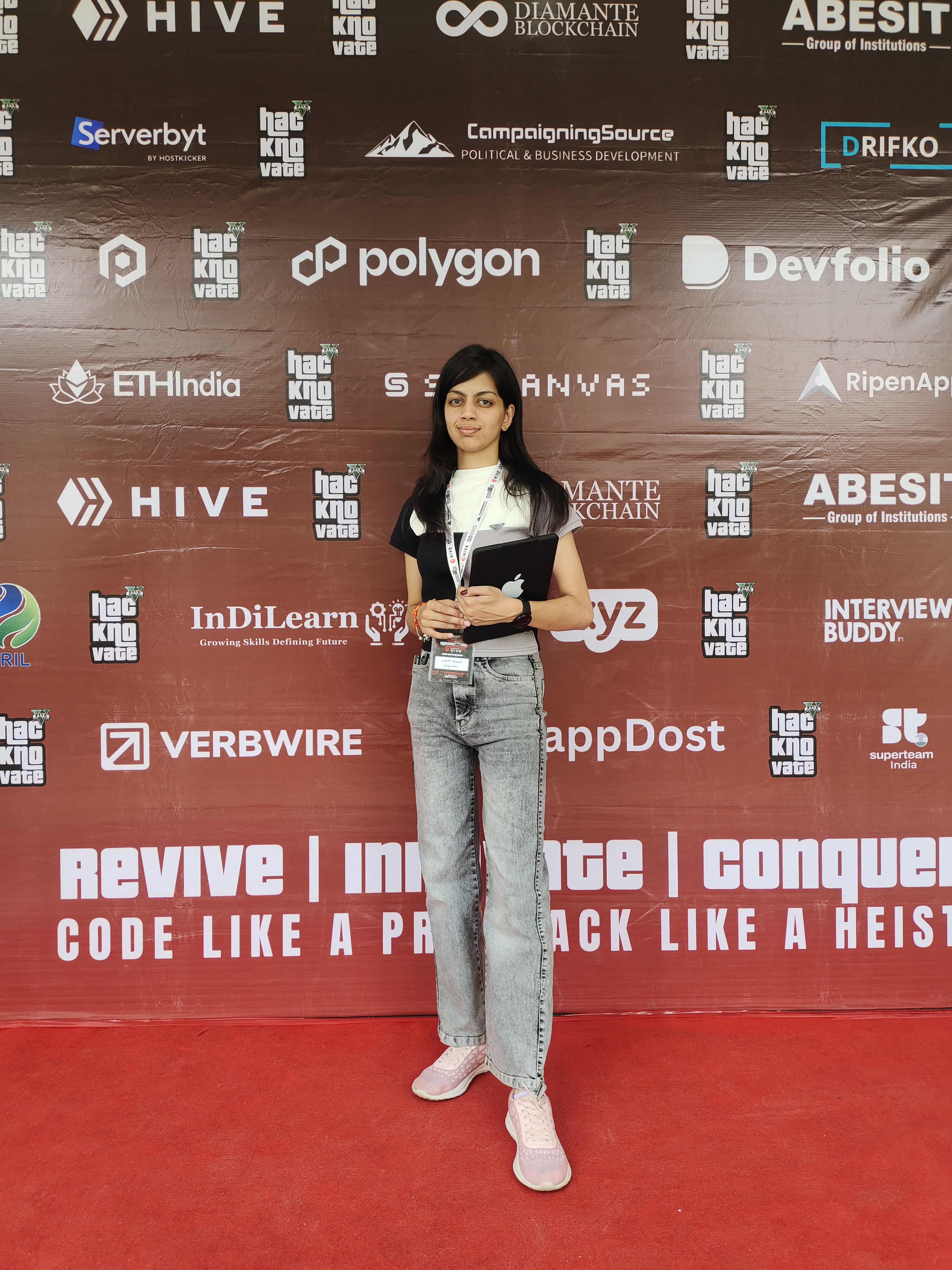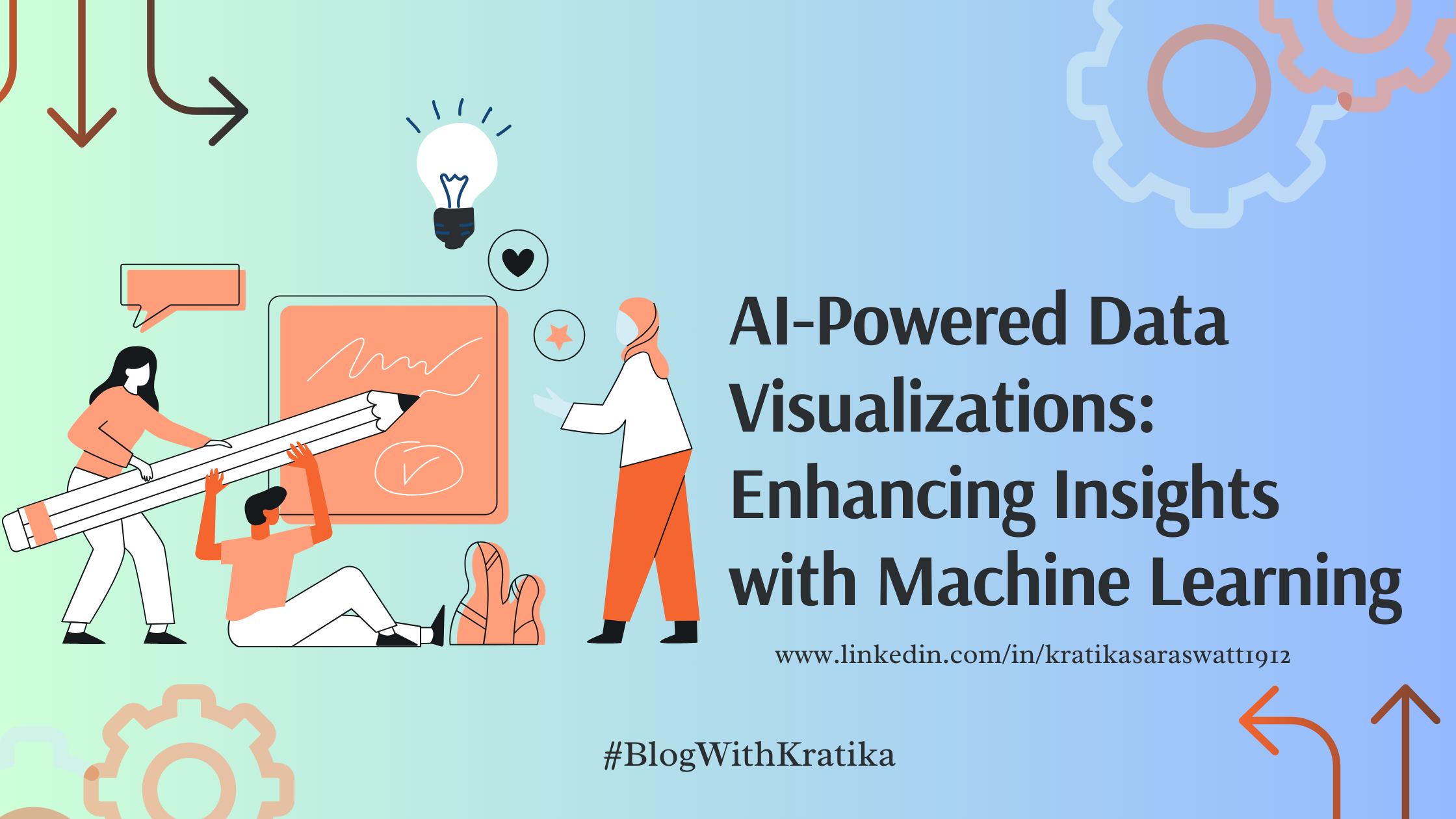AI-Powered Data Visualizations: Enhancing Insights with Machine Learning
 Kratika Saraswat
Kratika Saraswat
In today's data-driven world, businesses and organizations are generating more data than ever before. However, the sheer volume of information can be overwhelming, making it challenging to extract valuable insights. This is where data visualization plays a critical role—it transforms raw data into meaningful visuals that make it easier to understand patterns, trends, and anomalies. But the traditional methods of visualization are no longer enough. With the rise of Artificial Intelligence (AI) and Machine Learning (ML), the world of data visualization is being revolutionized.
The Evolution of Data Visualization
Data visualization has long been a powerful tool for data analysis. From simple bar charts and line graphs to complex heat maps and scatter plots, it allows users to visually interpret data, simplifying complex datasets into digestible formats. However, traditional data visualizations often require manual input, predefined assumptions, and static representations of information.
With the advent of AI and ML, we are witnessing a shift from static, manual visualizations to more dynamic, automated, and intelligent insights.
How AI and ML Enhance Data Visualization
Automated Data Processing and Visualization
One of the most significant impacts of AI in data visualization is the automation of data processing and chart generation. Traditional visualizations often require significant manual intervention, from selecting the right datasets to determining the best visualization types. AI-powered platforms, on the other hand, can automatically analyze data and suggest the most appropriate visual formats based on the underlying patterns. Machine learning algorithms can detect trends, anomalies, and relationships that may not be apparent through basic analysis, and then display them in the most effective format.Advanced Predictive Analytics
Machine learning is not only capable of analyzing historical data but also predicting future trends. By using algorithms that learn from past data, AI-powered visualization tools can create projections and forecasts, adding a layer of predictive analytics to dashboards. For instance, businesses can visualize potential sales trends, future customer behavior, or inventory requirements by analyzing past patterns and letting ML generate predictive models. This makes it easier for decision-makers to anticipate outcomes and plan accordingly.Natural Language Processing (NLP) for Data Queries
AI-powered tools are beginning to incorporate Natural Language Processing (NLP), allowing users to interact with data through natural language queries. Instead of having to manually select and filter data, users can now ask questions like, "What were the top-performing sales regions last quarter?" and receive an answer in the form of visual insights. This makes data visualization more accessible to non-technical users and removes the barrier of needing deep expertise in data analysis.Real-time Visualization and Decision Making
AI allows for real-time analysis and visualization of data streams. Businesses can now monitor live data and visualize it instantly, allowing for real-time decision-making. For example, a retail business can track customer behavior, sales, and inventory in real-time, allowing them to adjust pricing, stock levels, or marketing efforts instantly based on current trends. AI algorithms ensure that the visualizations are continuously updated, keeping stakeholders informed with the latest insights.Pattern and Anomaly Detection
AI-driven visualizations excel at detecting patterns and identifying outliers that traditional methods might miss. Machine learning algorithms can analyze large datasets to uncover hidden correlations, trends, and anomalies, which can then be highlighted through visual representation. This is especially valuable in industries such as finance and cybersecurity, where detecting anomalies early can prevent significant losses or security breaches.Personalized and Adaptive Visualizations
One of the most exciting developments in AI-driven visualization is the ability to offer personalized insights. Instead of delivering the same static dashboard to every user, AI can tailor the visualizations based on user preferences, behavior, and goals. For instance, a marketing manager might receive different data insights than a product development team, even though both are analyzing the same dataset. Machine learning algorithms can adapt visualizations dynamically, providing each user with the most relevant and actionable insights.
Real-World Applications of AI-Powered Data Visualization
Healthcare
AI-powered visualizations are being used in healthcare to improve diagnostics and patient outcomes. By analyzing patient data, machine learning models can detect patterns that may indicate early signs of disease, helping doctors visualize these insights through dashboards. This helps in improving preventive care and treatment plans.Finance
In the financial sector, AI and ML are revolutionizing fraud detection and investment forecasting. Real-time anomaly detection visualizations can flag suspicious transactions, while predictive models offer investment firms insights into future market trends, helping traders make data-driven decisions.Retail
Retailers are utilizing AI-powered data visualizations to optimize inventory management and customer experience. By analyzing customer purchase data and inventory levels in real-time, retailers can visualize trends and adjust supply chain operations to meet demand efficiently.Marketing
AI-based tools in marketing offer personalized customer insights by analyzing large sets of engagement data. Visualization platforms powered by machine learning can generate customer personas, predict purchasing behaviors, and create adaptive marketing campaigns based on real-time customer interactions.
The Future of AI and ML in Data Visualization
As AI and ML technologies continue to evolve, their role in data visualization will only grow more profound. We can expect future visualizations to be even more intuitive, personalized, and intelligent, reducing the gap between data complexity and decision-making. AI-powered data visualization tools will enable businesses to move from reactive to proactive data strategies, enhancing their ability to drive innovation and maintain competitive advantages.
Conclusion
AI-powered data visualizations are transforming how we interact with data, providing richer insights and more efficient decision-making processes. By automating data analysis, improving predictive capabilities, and offering personalized and adaptive visualizations, AI and ML are taking data visualization to the next level. Organizations that adopt these technologies will be better equipped to uncover hidden trends, make informed decisions, and stay ahead in a rapidly evolving data landscape.
The future of data visualization lies in AI—and it’s a future full of possibilities.
Subscribe to my newsletter
Read articles from Kratika Saraswat directly inside your inbox. Subscribe to the newsletter, and don't miss out.
Written by
